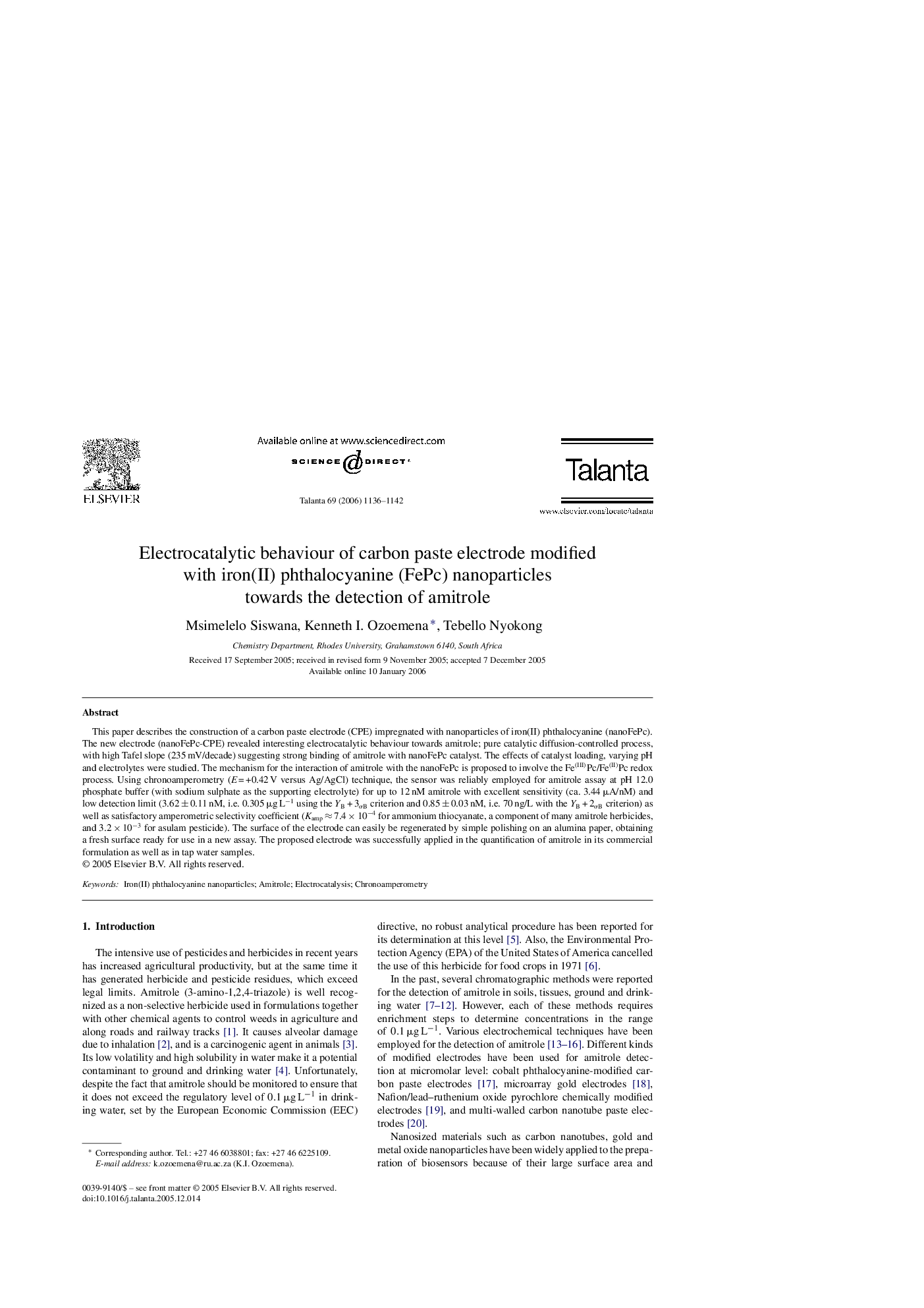| Article ID | Journal | Published Year | Pages | File Type |
|---|---|---|---|---|
| 1245683 | Talanta | 2006 | 7 Pages |
This paper describes the construction of a carbon paste electrode (CPE) impregnated with nanoparticles of iron(II) phthalocyanine (nanoFePc). The new electrode (nanoFePc-CPE) revealed interesting electrocatalytic behaviour towards amitrole; pure catalytic diffusion-controlled process, with high Tafel slope (235 mV/decade) suggesting strong binding of amitrole with nanoFePc catalyst. The effects of catalyst loading, varying pH and electrolytes were studied. The mechanism for the interaction of amitrole with the nanoFePc is proposed to involve the Fe(III)Pc/Fe(II)Pc redox process. Using chronoamperometry (E = +0.42 V versus Ag/AgCl) technique, the sensor was reliably employed for amitrole assay at pH 12.0 phosphate buffer (with sodium sulphate as the supporting electrolyte) for up to 12 nM amitrole with excellent sensitivity (ca. 3.44 μA/nM) and low detection limit (3.62 ± 0.11 nM, i.e. 0.305 μg L−1 using the YB + 3σB criterion and 0.85 ± 0.03 nM, i.e. 70 ng/L with the YB + 2σB criterion) as well as satisfactory amperometric selectivity coefficient (Kamp ≈ 7.4 × 10−4 for ammonium thiocyanate, a component of many amitrole herbicides, and 3.2 × 10−3 for asulam pesticide). The surface of the electrode can easily be regenerated by simple polishing on an alumina paper, obtaining a fresh surface ready for use in a new assay. The proposed electrode was successfully applied in the quantification of amitrole in its commercial formulation as well as in tap water samples.
